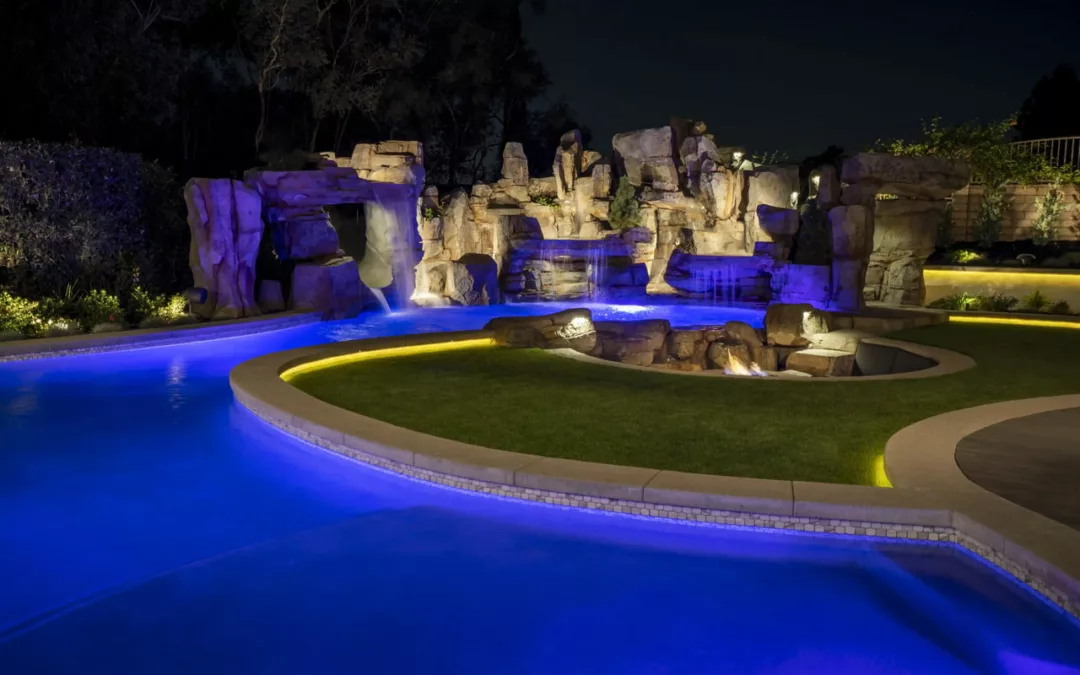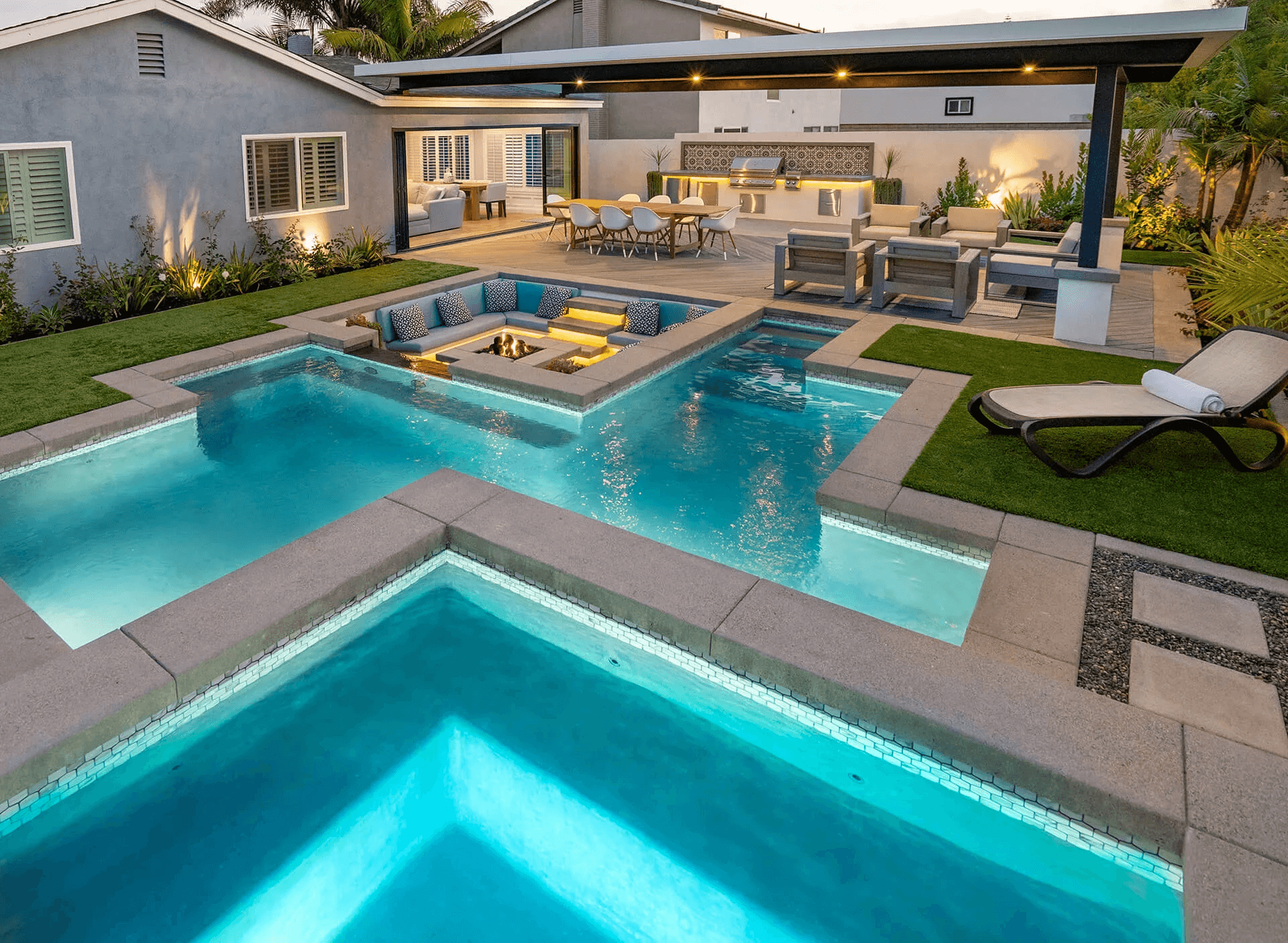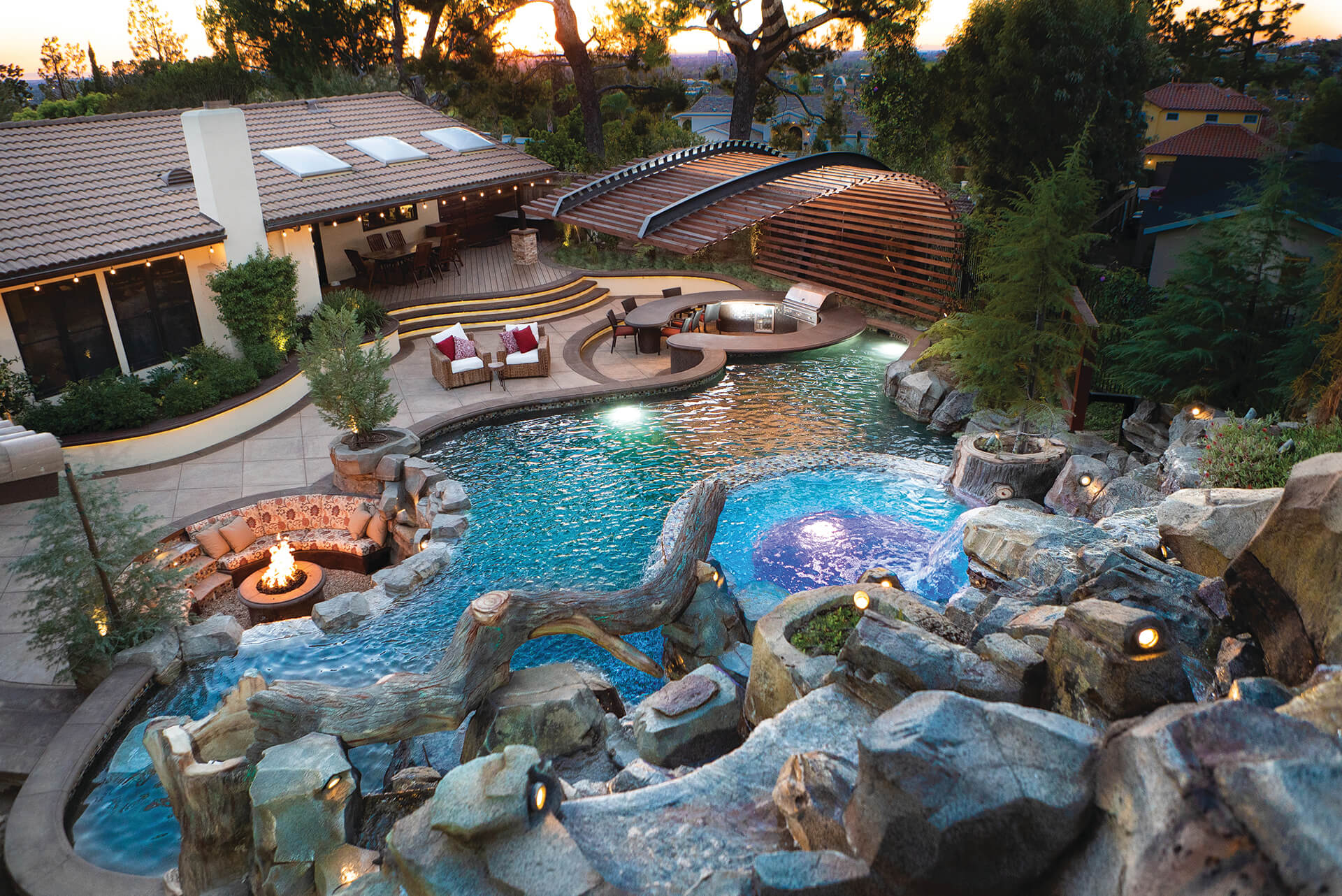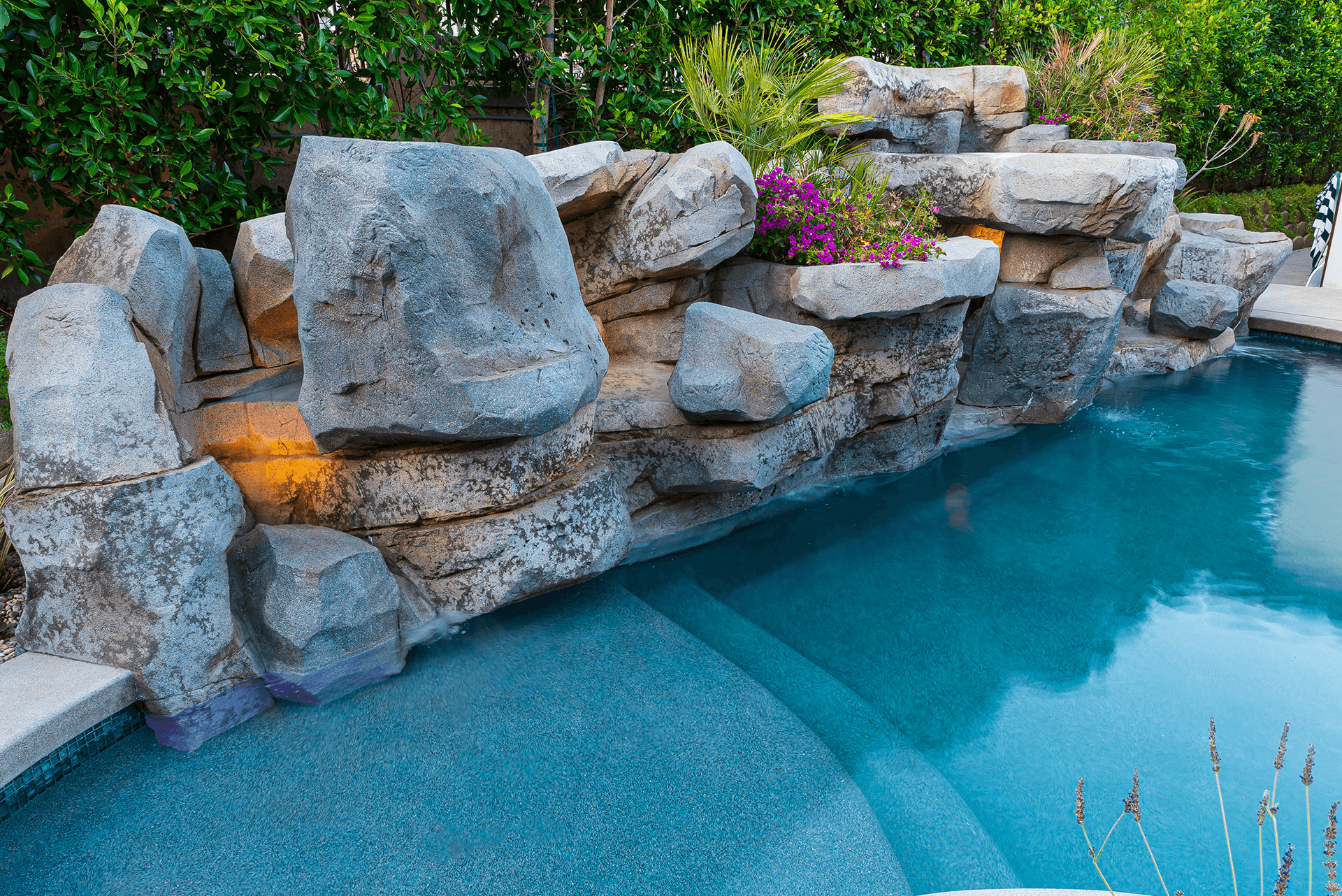Your pool completes your home, giving you the backyard paradise you’ve always wanted. But it does come with its costs. Not only do you have the monthly maintenance costs, but you also have the cost of minor repairs like patching a leak and major repairs like replacing the pool pump.
To alleviate the stress of maintaining your swimming pool, you’ll want to find a reliable pool contractor who can help with jobs of all sizes, from patches to resurfacing.
Most pool repairs are a relatively easy fix, but maintaining your pool long-term will require bigger repairs from time to time. One such repair is pool resurfacing, which needs to be done once every 10 years. While it’s tempting to do it yourself, you want to leave a job of this magnitude to the professionals, by hiring a team of experts for pool remodeling in Los Angeles.
The pool contractors you choose should be able to walk you through all of your pool resurfacing options and help you get the job done in a timely and cost-efficient manner.
How Much Does Pool Resurfacing Cost?
The cost of resurfacing largely depends on many factors:
- Resurfacing material used.
- Size of the swimming pool.
- Type of pool.
- Previous pool surface material used.
- Pool condition.
- Labor.
- Draining and refilling.
- Cleaning.
- Repairs.
- Customizations.
The range of resurfacing costs is incredibly wide, ranging from $1,000 to $30,000. However, on average, homeowners will see pool resurfacing cost approximately $6,500 per 1,000 square feet.
Plaster resurfacing typically costs $5,500 per 1,000 square feet and lasts about 10 years. White is the standard color for a plaster finish, but you can also ge gray, blue, and black surfaces. Remember that prices will increase as soon as you start customizing the finish.
Concrete and fiberglass resurfacing typically costs $6,500 per 1,000 square feet, but as soon as you start choosing finishes like tile and aggregate, the costs go up.
What is Pool Resurfacing?
Several materials are used for pool resurfacing, with some being more common than others.
The most common resurfacing materials in the United States are concrete, pool plaster, and fiberglass.
If you want to keep your pool in peak condition for as long as possible, pool resurfacing is a necessary maintenance step. Over time the top surface layer of your pool will begin to break down, causing issues such as persistent leaks and flaking.
Pool resurfacing is the process of removing the existing top surface layer and replacing it with a new layer of material that will provide the watertight seal needed to keep your pool performing well.
You have a variety of pool resurfacing options available, each with its own cost, durability, longevity, and aesthetics. However, when choosing a resurfacing material, focus on quality rather than just cost, as it can impact how frequently the process needs to be repeated.
Determining Whether Your Pool Needs Resurfacing
Resurfacing your pool can be a big undertaking, so it’s a good thing it only needs to be done every 10 or so years. While you can regularly schedule resurfacing into the long-term maintenance schedule for your pool, most homeowners will wait until there are signs that their pool needs resurfacing.
You can hire an expert to come out and inspect your pool, or you can keep your eye out for some of the telltale signs that the time for resurfacing has come. Here are some things to watch out for:
- Flaking
- Peeling
- Chips
- Cracks
- Persistent leaks
- Staining
- Discoloration
- Roughness
If you find these signs, it’s time to call the best pool remodelers in Southern California to get your pool back in pristine condition.
Be sure to get in touch right away, as resurfacing is a big job and can take one to two weeks to complete, depending on your pool’s size, shape, and surface material. The process requires your pool to be completely drained, cleaned and the existing surface removed. Then your pool will be prepared, primed, and the resurfacing material of your choice will be installed.
Note that if you have a vinyl pool, it cannot be resurfaced. If you have persistent leaking, staining, or discoloration, you will need to replace the liner. Vinyl liners cost between $1,000 and $3,500 per 1,000 square feet.
Cost of Pool Resurfacing Options
You have several materials available when it comes to pool resurfacing.
Your pool resurfacing options include:
- Concrete
- Pool plaster
- Fiberglass
- Paint
- Aggregate
- Tile
These materials vary in cost and durability, so it is important to carefully consider each material with your budget and the particulars of your specific project (size, condition, etc.).
Concrete
Concrete is one of the resurfacing materials that’s been around the longest. It’s remained popular because it is durable, water-resistant, and holds up well against extreme temperatures and UV rays without any damage. It’s also affordable and easy to install.
As the years have gone by, technological advancements have made concrete one of the most versatile pool surfaces. For example, you can get hand-stained decorative finishes and printed logos. You also have the option to choose a high-gloss finish, or you can get a faux-stone finish to give your pool a $10,000 look on a $1,000 budget.
The average cost of concrete resurfacing is $6,500 per 1,000 square feet and goes up with customizations.
Pool Plaster
Like concrete, pool plaster is durable and withstands extreme temperatures. Plaster surfaces last a long time and are remarkably tolerant of pool chemicals. Plaster also leaves a beautifully smooth, even finish without any bumps or dents.
One of the benefits of choosing a pool plaster finish is that it is low maintenance and requires minimal upkeep. It is also one of the easier surfaces to install. Coming in at just about $5,500 per 1,000 square feet, pool plaster is one of the most affordable pool resurfacing options. Remember that customizations, such as adding pigment, will increase this price.
Fiberglass
Fiberglass is fast becoming the pool surface of choice. It is far more durable and long-lasting than concrete and plaster. In fact, a well-maintained fiberglass pool might only need to be resurfaced after 20 years.
Fiberglass pool surfaces are nonporous and don’t absorb the usual pool dirt, but they must be thoroughly cleaned. Its glossy finish makes it a good choice for those who like a high-end shine to their pools.
If you consider using fiberglass for your pool resurfacing, you’re looking at $6,500 per 1,000 square feet on average.
Paint
Opting for paint for pool resurfacing is the cheapest option, coming in at $1,500 per 1,000 square feet. However, this material does present its challenges, the largest of which is its lack of durability and short life span.
Resurfacing your pool with paint means you’ll need to do it again in two to five years as opposed to the 10-plus years of other materials. While you may be tempted to go with epoxy pool paint to extend its life to seven years, it is important to know that it struggles to withstand constant exposure to pool chemicals.
Aggregate
Aggregate is a mixture of cement, quartz, pebbles, and glass beads, making a beautiful pool resurfacing material. Aggregates can be either smooth or exposed. A smooth aggregate finish will be polished flat. In contrast, an exposed finish will show the pebbles or glass beads, giving it a bumpy texture.
While there will be some variance in cost depending on what is in the aggregate, this type of resurfacing typically costs around $6,500 per 1,000 square feet.
Note that the type of aggregate can affect durability. For instance, quartz aggregate has a 12-year life span, while glass-bead aggregate can last up to 20 or more years (with proper pool maintenance).
Tile
Tile is where finishes get expensive. Surfacing a pool in tiles can cost $30,000 per 1,000 square feet. The cost varies drastically depending upon the material from which they are crafted:
- Porcelain tiles: approximately $4 per square foot.
- Ceramic tiles: approximately $6 per square foot.
- Glass tiles: can go up to $25 per square foot.
While tiles are the most expensive pool resurfacing option, they have the longest life span, extending to 20 years or more. Glass tiles can last even longer than that.
Many people use accent tiling, where they use tiles above the water line and concrete or fiberglass for the rest of the finish.
What Else Adds to Pool Resurfacing Costs?
When deciding which pool resurfacing option is right for you, it’s important to remember that other factors will add to your total pool resurfacing costs. Three of the biggest factors to influence the final cost are the following:
- Draining and refilling costs: It can cost $175 to $225 to drain a pool and around $55 per 5,000 gallons to refill. You can manage draining and refilling the pool yourself, which can reduce this price, but the additional time and energy should be factored into your final decision.
- Cleaning costs: Cleaning your pool can cost $250 if you hire a professional pool remodeling contractor. Again, you can save on this cost by cleaning the surface yourself. However, if your existing pool surface is concrete, it will need an acid wash before resurfacing.
- Labor costs: It’s difficult to pin down labor costs because there are so many variables, but it’s safe to assume a cost of $45 to $65 per hour. Repairs, such as patching leaks and resealing cracks, may also be necessary before resurfacing your pool.
Pool Resurfacing Is a Time of Transformation
Pool resurfacing gives your swimming pool a new lease on life with its new surface. It also gives you the opportunity to make upgrades, because the pool is already drained. Let’s say you wish you had a better water heating system or new underwater lights. Installing them during your resurfacing project is the perfect time!
Rather than look at the daunting process of pool resurfacing as a necessary evil, consider it a time to revamp your backyard oasis to fit any changes to your lifestyle, making it better than ever before. Our team of expert pool builders in Orange County is waiting to help you transform your outdoor living space.




